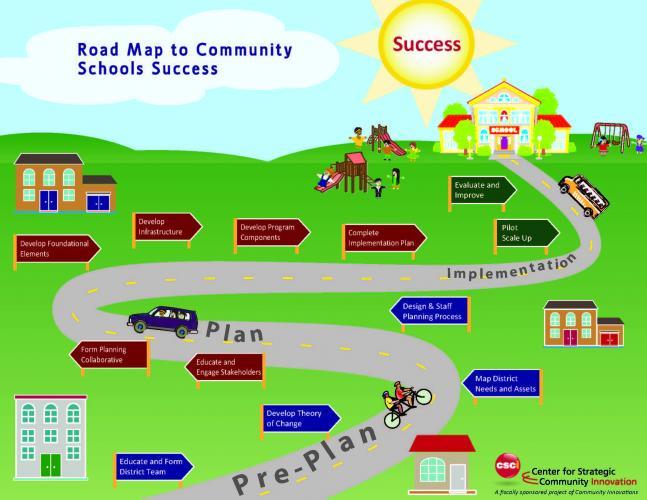The Cities Counties Schools (CCS) Partnership online toolkit
helps local agency elected officials and staff understand,
support and build community schools partnerships. The toolkit is
filled with resources that offer strategies, examples of
successful partnerships in urban, suburban and rural communities,
lessons learned, and templates for different types of community
schools partnerships. The toolkit was developed with generous
support provided by Kaiser Permanente, the United Way of the Bay
Area, the Stuart Foundation and CCS’ partner associations, the
League of California Cities, the California State Association of
Counties and the California School Boards Association.
Community schools partnerships are strategies to improve outcomes
for children, families and the greater community through enhanced
access to services and support from non-profits, businesses,
social service organizations and government agencies. Through
collaboration, community schools partnerships enhance delivery of
services and are opportunities for cost savings through
intentional coordination.

CCS Partnership takes the approach that community schools
partnerships extend to city and county facilities as well as in
the schools serving youth and families. Partnerships and
collaboration can increase programs and services offered to
families, and locations can be as diverse as the city park or
library, county community center or a service organization’s
clubhouse. Ultimately, an individual community schools
partnership reflects the unique circumstances of the community in
which the partnership is located. A community schools partnership
may provide dental and health screening at the community center,
literacy training at the school site for parents in partnership
with the library, or after-school care at a non-profit
organization’s facility. By coordinating resources, and
communicating with families, the collaboration can improve how
agencies provide services and the number of children and families
being served.
This toolkit is designed for local officials to learn about
examples of partnerships in California that can serve as models
for emerging or expanding collaborations. Examples are diverse in
representing the experience of suburban, urban and rural
geographies of California. In each jurisdiction, and even
within communities, partnerships look different depending on
available resources and the needs of children and families. One
community may need to focus on financial resources for schools,
while another may need to focus on health and well-being of
students and families to keep students attending class. Other
communities may need support for after-school services but
already have resources coordinated for nutrition and health. Each
community can assess its individual needs and opportunities and
build a collaborative approach in addressing gaps. Assessing
conditions and evaluating progress is essential in determining
the success of a partnership.
Highlighting the successes, lessons learned, and challenges of
partnerships among local agencies and community-based
organizations operating within the context of California’s unique
financial and legal environments makes this toolkit unique.
Toolkit content is based on the well-researched and developed
materials of the community schools movement. This toolkit
endeavors to bring these resources to the audience of cities,
counties and schools that are working in concert to achieve
success for youth and families.
 Menu
Menu

